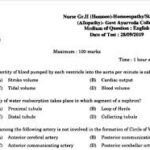The proliferation and fragmentation of media outlets are continual in the era of digital acceleration. Users still look for flow and connection. From this conflict, a concept known as channelsyncharma has begun to take shape. It blends the concepts of digital karma and channel synchronization. The goal of this new phrase is to characterize the overall cadence and conduct across platforms. It has conceptual power even though it isn’t yet codified.
Channelsyncharma implies that the flow of content follows a pattern. It suggests that time, media alignment, and user behavior might all combine to create a sort of digital harmony. Despite being abstract, this concept is gaining traction. It shows the coordinated waves of content consumption and influence.
The Origins of the Term Channelsyncharma
It seems that the term “channelsyncharma” is a neologism. It probably creates a hybrid phrase by combining three concepts. “Channel” describes both human- and machine-driven media streams. “Sync” suggests timing and cooperation. A metaphysical undertone is added by “charma,” a stylized version of karma.
When taken as a whole, these elements point to a network of related actions and feedback cycles. The term initially appeared in blogs about media theory and developer forums. Though slight, its ascent is discernible. It has been used by creators and digital theorists to explain online shared experiences.
Understanding Channel Synchronization
The alignment of media timelines across platforms is referred to as channel synchronization. For instance, a single video simultaneously becomes viral across several platforms. Or, in a brief period of time, multiple creators provide comparable work. This synchronization could be algorithmic or deliberate.
This is expanded upon by Channelsyncharma, which poses more complex queries. Why do trends fluctuate in synchronized outbursts? What common cues influence them? Algorithmic learning, human attention, and emotion may hold the solutions.
The Role of Karma in Digital Feedback
Channelsyncharma’s “charma” alludes to digital karma. Every internet action generates a response. A view, like, or share turns into data. What individuals view next is reshaped by that data. Actions in this loop produce outcomes outside of the screen.
According to Channelsyncharma, these impacts are not limited to people. They mold more general patterns. Interactions pulsate over entire networks. The harmony becomes increasingly apparent as those acts become more in tune.
Network Behavior and Social Echoes
Networks act as though they were live things. There are ripple effects when users behave in unison. A single meme goes viral and gives rise to variants. Timelines are shifted globally by a single news story. This echo phenomena is what Channelsyncharma aims to explain.
It views digital platforms as settings that rely on rhythm. Those beats are co-created by users. A sort of digital music is created by their clicks, pauses, and responses. Every beat has impact. Others are able to rise with each stillness.
Emotional Waves Across Platforms
Emotion travels via media more quickly than reason. Anger, excitement, anxiety, and joy all move in milliseconds. Channelsyncharma takes into account how feelings drive coordinated waves. Millions of decisions can be influenced by the mood of the group.
Some patterns may start right away because of this shared emotional timing. It might also clarify why some people don’t succeed. Emotional peaks are detected by platforms. In response, algorithms emphasize specific material. The sync effect is intensified by this chain reaction.
Algorithmic Influence and Pattern Formation
Algorithms anticipate rather than merely respond. They try to direct attention by learning from past trends. This concept is a part of channelsyncharma. It views algorithms as media flow conductors. The way users move together is shaped by their instructions.
This impact isn’t always evident. Users are guided toward shared information by subtle cues. Massive trends are fueled by this covert collaboration. According to Channelsyncharma, the system and the user are partners in a dance. Neither leads entirely.
Content Cascades and Sync Points
A piece of content can occasionally start a cascade. Reaction videos start with a single clip. Discussions and remixes are sparked by one post. These are places of sync. Channelsyncharma concentrates on these intersections.
Content expands during these times rather than merely moving. It spreads to other platforms. Inadvertently, creators build upon one another. The outcome seems to be the product of deliberate cooperation. However, it frequently occurs naturally under the direction of mutual timing.
Implications for Creators and Marketers
A greater understanding of channelsyncharma aids producers in scheduling their work. They can match the energy of the audience. They are able to follow feelings. Instead of drawing attention to themselves, brands can capitalize on the trend.
They become part of timelines rather than interfering with them. This builds resonance and trust. The harmony is felt by the audience. When content adapts to the current, engagement increases. Creative calendars may someday be guided by channel syncharma.
Digital Rituals and Behavioral Cycles
Online behavior is ritualistic. At specific periods, people scroll. In some moods, they comment more. This cyclical activity is captured by Channelsyncharma. It monitors digital energy’s peaks and troughs.
These cycles can be seen in different places. They adjust to different cultures and time zones. However, the rhythm is frequently constant. Improved engagement results from an understanding of these trends. It improves clarity and lowers noise.
Group Consciousness in Digital Spaces
Online conduct is ritualistic. There are times when people scroll. They comment more in certain emotions. Channelsyncharma captures this cyclical action. It tracks the highs and lows of digital energy.
These cycles are visible in several locations. They adapt to various time zones and civilizations. The rhythm is often steady, though. Understanding these trends leads to increased engagement. It reduces noise and increases clarity.
Cross-Platform Influence and Timing
Trends are no longer limited to a single app. Sounds from TikTok move to Reels. On Instagram, tweets turn into screenshots. This flow is monitored by Channelsyncharma. Platforms are seen as rivers that converge and mingle.
It all boils down to timing. A post by itself might not go well. However, it flourishes when positioned inside a coordinated wave. This timing is a combination of art and science. How these choices correspond with results is explained by channelsyncharma.
Challenges in Measuring Digital Harmony
It is challenging to track synchronized behavior. Platforms conceal information. Users behave erratically. Channelsyncharma, however, offers a solution. It pushes academics to consider rhythm in addition to statistics.
Numbers by themselves might not always reflect harmony. It might exist in timing, echoes, and patterns. Comprehending this aids in deciphering virality. It aids in forecasting online behavior. It provides a new metric for artists to monitor.
Channelsyncharma in Future Technology
Channelsyncharma may be used to direct system design as smart environments expand. Emotional cues may cause devices to sync. Interfaces might change depending on the audience’s mood. Real-time content adaptation is possible.
Media would become more humanistic as a result. Instead of dictating, it would react. Channelsyncharma turns as a model for adaptable technology. One that flows with users and listens to them.
Spiritual Interpretation of the Concept
Channelsyncharma is interpreted as a spiritual concept by some. For them, inner balance is reflected in digital harmony. They think that the media is a reflection of society as a whole. Synchronization, in their opinion, is energetic alignment.
This view gives it more nuance. It encourages digital production with awareness. It implies that content may do more than merely educate. It views algorithms as more than simply code; it views them as spiritual tools.
Frequently Asked Questions
Is the theory of channelsyncharma true?
It is a new idea that hasn’t been codified in scholarly works yet.
From where did the word originate?
It seems to be a combination of karma or dharma roots, channel, and sync.
Is it measurable?
Not exactly, although trends in user behavior and content waves can be seen.
Who is the term’s user?
creators, programmers, and digital theorists who study trend movement and media behavior.
Does this hold true for AI systems?
Indeed, AI helps to synchronize answers and material across platforms.
Is it useful for content strategy?
Indeed, it provides information on audience energy alignment, tone, and timing.
Conclusion
Although the term “channelsyncharma” is novel, it expresses a familiar sensation. Platforms felt alive at that moment. when everything seemed to flow together. when creators and viewers unconsciously align. It gives the digital world’s unseen rhythm a name.
It becomes increasingly important to comprehend this rhythm as online places expand. It can support the development of deeper content, improved systems, and digital balance. We are reminded by Channelsyncharma that technology is more than simply code. Timed, calibrated, and profoundly connected, it is a reflection of people.








